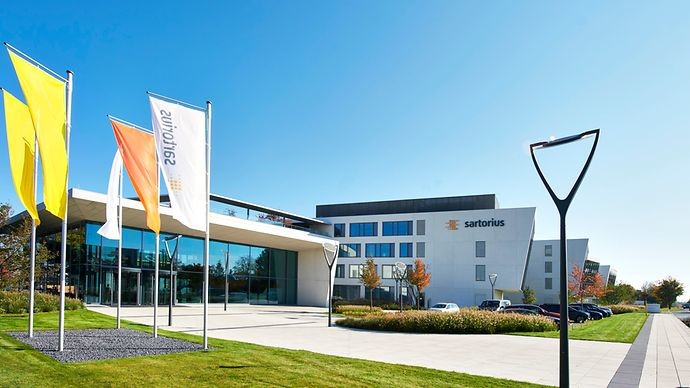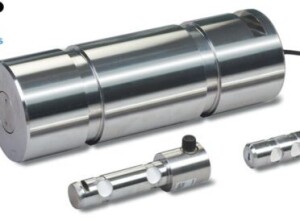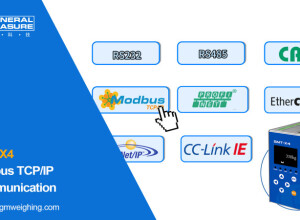Sartorius AG (Germany) - Sartorius, a leading international partner of biopharmaceutical research and the industry, confirmed its preliminary figures with the publication of its 2018 Annual Report. Accordingly, the Group continued on the growth track in both divisions and across all geographies, and thus achieved its forecast raised considerably at mid-year. Group sales revenue rose in constant currencies by 13.2% to 1,566.0 million euros (reported: +11.5%), with the non-organic share of this figure amounting to around one percentage point. The EMEA region (Europe | Middle East | Africa) accounted for 42% of consolidated sales; the Americas, 33%; and Asia | Pacific, 25%. Order intake rose in constant currencies by 12.5% to 1,662.5 million euros.
The positive development of the Group is reflected by the organic increase in the number of employees. As at December 31, 2018, a total of 8,125 people were employed at Sartorius worldwide; this was a year-over-year gain of some 600 new employees or 8.3%.
“Sartorius systematically used the opportunities provided by the dynamic biopharmaceutical market in 2018 and, at the same time, defined the roadmap in important areas for achieving further profitable growth,” said Dr. Joachim Kreuzburg, CEO and Executive Board Chairman of Sartorius AG, at the annual press conference. “We started off the new fiscal year in a tailwind and have aligned our infrastructure for sustainable expansion. Although it remains to be seen how economic development, especially in Europe, will affect our smaller Lab Products & Services Division, we see ourselves very well positioned overall, given our attractive and innovative portfolio, to reach our ambitious short- and midterm targets.”
For the full year of 2019, Sartorius expects to continue to grow profitably. Consolidated sales revenue is thus projected to rise by about 7% to 11%. This forecast considers the changes to the sales alliance with the Lonza group in the area of cell culture media. Without these changes, sales growth would probably be some 2 percentage points higher. Regarding profitability, management forecasts that the company's EBITDA margin will increase to slightly more than 27.0% over the prior-year figure of 25.9%, with the operating gain projected to be about half a percentage point and the remaining increase expected to result from a change in the accounting rules2).
Overproportionate profit growth in 2018; further increase in dividends planned:
The Group’s underlying earnings before interest, taxes, depreciation and amortization (underlying EBITDA) increased overproportionately in 2018 by 14.7% to 405.0 million euros. Its corresponding margin rose by 0.8 percentage points to 25.9%. Relevant net profit3) for the Group surged 21.9% from 144.0 million euros a year earlier to 175.6 million euros. This yielded earnings per ordinary share of 2.56 euros (2017: 2.10 euros) and earnings per preference share of 2.57 euros (2017: 2.11 euros).
Considering the company’s positive business performance, the Executive Board and the Supervisory Board will submit a proposal to the Annual General Shareholders' Meeting on March 28, 2019, to raise dividends to 0.62 euros per preference share and 0.61 euros per ordinary share. If approved, the total amount disbursed would thus rise by 21.8% year over year from 34.5 million euros to 42.1 million euros. The dividend payout ratio would be 24.0% as in the previous year.
Continued sound financial base and high operating cash flow:
The Sartorius Group continues to have a very sound financial base. Its equity ratio at year-end was 38.5%, above the previous year’s level of 35.1%, and its ratio of net debt to underlying EBITDA edged down slightly from 2.5 in 2017 to 2.4 despite its extensive investment program. The operational strength of the Group is also reflected by its operating cash flow, which was up 18.4% above the prior-year figure, to 244.5 million euros in 2018.
Capital expenditures were 237.8 million euros, up 13.6% from the year earlier; this yielded a capex ratio of 15.2% (2017: 14.9%). Investing activities focused on the expansion of production capacity levels at the company’s site in Yauco, Puerto Rico, and on the extension of Group headquarters as well as manufacturing capacity in Göttingen, Germany. “In the current fiscal year as well, we will also invest very significantly in the expansion of our global infrastructure while our capex ratio will decrease as of 2019 once we have completed some relatively larger projects. However, our capex ratio is likely to be double-digit again, about 12%, for the current fiscal year,” explained Dr. Joachim Kreuzburg.
Strong growth in Bioprocess Solutions; solid performance in Lab Products & Services:
The Bioprocess Solutions Division, which offers a wide array of innovative technologies for the manufacture of biopharmaceuticals, grew very dynamically and even better than expected at the beginning of the year. It increased its sales revenue in constant currencies by 14.8% to 1,143.1 million euros (reported: +13.1%). The division’s highly competitive product portfolio and rising demand across all product categories fueled growth, which was mainly organic. Order intake in constant currencies was up 14.9% from the year-earlier figure. The division’s underlying EBITDA rose slightly overproportionately by 15.7% to 326.9 million euros. Its underlying EBITDA margin increased accordingly by 0.6 percentage points to 28.6% due to economies of scale.
The Lab Products & Services Division, which offers laboratory instruments and technologies for laboratories performing R&D and quality control primarily in the life science sector, developed robustly following a very strong year earlier. Despite softer demand in Europe since the second half of 2018, the division increased its sales revenue by 9.1% (reported: +7.3%) to 423.0 million euros. In constant currencies, order intake for the division was up 6.3% from 2017. The division’s underlying EBITDA climbed 10.4% to 78.1 million euros; its earnings margin was positively influenced by economics of scale and product mix effects, and stood at 18.5%, half a percentage point above the prior-year figure.
Further profitable growth projected for 2019:
Sartorius expects to grow profitably in 2019 as well. Consolidated sales revenue is thus projected to grow by about 7% to 11%. This forecast considers the changes to the sales alliance with the Lonza group in the area of cell culture media. Without these changes, sales growth would probably be some 2 percentage points higher. Regarding profitability, management forecasts that the company's EBITDA margin will increase to slightly more than 27.0% over the prior-year figure of 25.9%, with the operating gain projected to be about half a percentage point and the remaining increase expected to result from a change in the accounting rules.3) The ratio of capital expenditures to sales revenue is forecasted to be around 12%, down from the 2018 figure of 15.2%.
For the Bioprocess Solutions Division, management anticipates that sales will grow by about 8% to 12% (without considering the modification of our partnership with Lonza, between approx. 11% and 15%) and that the division’s underlying EBITDA margin will increase to slightly more than 29.5% relative to the prior-year figure of 28.6%. The operating gain is expected to account for around half a percentage point.3)
The Lab Products & Services Division is partly dependent on the development of economic cycles. A number of indicators now signal that economic development is slowing in important economic regions. Against this backdrop, management forecasts that the division’s sales revenue will increase by about 5% to 9% and the underlying EBITDA margin to slightly more than 20.0% (previous year: 18.5%), with the operating gain expected to account for about halfa percentage point3).
Ambitious targets up to 2025:
Against the background of global trends that are likely to lead to steadily growing demand for biopharmaceutical medications and vaccines, Sartorius projects that it will achieve considerable growth also beyond 2019. Therefore, in February 2018, management set ambitious midterm targets for sales revenue and profitability: In the five-year phase from 2020 to 2025, the Group’s sales revenue is projected to double again to 4 billion euros, with around two-thirds of this growth expected to be achieved organically and around one third by acquisitions. The Group’s underlying EBITDA margin is forecasted to further increase as well to around 28%.
To achieve these targets, Sartorius defined various initiatives that focus on especially highgrowth regions, the development of its product portfolio and on optimization of workflows by digitalization and automation. “North America is the largest market worldwide for bioprocess equipment and lab products; China has the highest growth rates in the segment of biologics. We aim to use this potential to the fullest and will therefore substantially strengthen our activities in both countries,” stated Kreuzburg. Sartorius plans to continuously expand its product portfolio across the entire value-added chain of the biopharmaceutical industry through its own development activities and by acquisitions of innovative technologies. These include, for instance, tools for data analytics and networking of equipment and systems, such as by the integration of software solutions for production control of bioprocesses. Expansion into adjacent application areas, such as regenerative medicine, is also planned to contribute to the company’s growth.
This growth is likely to be accompanied by a further significant increase in the number of staff. “I expect that we will be a team of around 15,000 in the Group by 2025; more than 8,000 people currently work for Sartorius,” commented Kreuzburg. “I am very confident that we will continue to find people who will never settle for the status quo and instead use their expertise, creativity and fighting spirit in joining forces with our customers to drive progress in the life sciences.”
1) Sartorius uses underlying EBITDA (earnings before interest, taxes, depreciation and amortization and adjusted for extraordinary items) as the key profitability indicator.
2) IFRS 16 required to be applied as of 2019 regulates accounting of lease contracts. Ultimately, this will result in the disclosure of longer term lease payments as depreciation and, accordingly, lead to a somewhat higher EBITDA, among other things. This will not entail any material changes concerning the Group’s relevant net profit or earnings per share.
3) After non-controlling interest, adjusted for extraordinary items and non-cash amortization, as well as based on the normalized financial result and corresponding tax effects.
























Interested? Submit your enquiry using the form below:
Only available for registered users. Sign In to your account or register here.